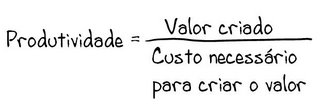.
Um dos documentos que guardo desse tempo é um “tutorial” com 10 “reprints” sobre o tema Estatística. O décimo artigo é um do qual me lembro muitas vezes, chama-se “Experimental design”. Nele pode ler-se:
.
“The classical approach to experimentation is to study one variable at a time: varying its level over a certain range, while holding all other variables constant, and observing the effect of the response variables.”
…
“This approach is not very good, however. For one thing, it is inefficient, requiring a separate set of observations for each variable and using each observation just once. It is also incapable of detecting interactions: variables acting together may have a greater or smaller effect than individual variables acting alone.”
O que o autor (Robert E. Miller) pretendia chamar a atenção, pode ser descrito nesta sequência de figuras.
Uma empresa quer optimizar o seu reactor no sentido maximizar o rendimento que consegue tirar de uma reacção química. As variáveis que pode manipular são o tempo de reacção (ou tempo de residência) e a pressão a que decorre a reacção. Seguindo o método que aprendemos na escola de variar uma variável de cada vez, mantendo as outras constantes temos:
 À pressão testada o rendimento máximo conseguido é de 64%.
À pressão testada o rendimento máximo conseguido é de 64%.Agora, fixando o tempo de residência no valor que deu o máximo de rendimento, o ponto A, variamos a pressão em busca do máximo rendimento:
 Assim, deste modo podemos concluir, de uma forma científica, que o rendimento máximo que se pode obter para esta reacção química anda em volta dos 78%
Assim, deste modo podemos concluir, de uma forma científica, que o rendimento máximo que se pode obter para esta reacção química anda em volta dos 78% Este método só funciona para sistemas com respostas lineares. Em sistemas não lineares… nós passamos completamente ao lado se usarmos este método:
Este método só funciona para sistemas com respostas lineares. Em sistemas não lineares… nós passamos completamente ao lado se usarmos este método: Lembrei-me desta lição ao escutar esta apresentação de John Holland sobre CAS (Complex Adaptive Systems)
Lembrei-me desta lição ao escutar esta apresentação de John Holland sobre CAS (Complex Adaptive Systems).
Depois, ao minuto 13:50 aparece um acetato simplesmente delicioso!
“A complex adaptive system, cas, is an evolving, perpectually novel set of interacting agents where
• There is no universal competitor or optimum
• There is great diversity, as in a tropical forest, with many niches occupied by different kinds of agents
• Innovation is a regular feature – equilibrium is rare and temporary
• Anticipations change the course of the system.
E para onde é que nós caminhamos?
.
.
.
.
Deste postal “Resumo” recordo a figura:
 Caminhamos para um mundo com mais incerteza, mais instabilidade, mais volatilidade, mais variedade, … uma autêntica floresta tropical… (ver no vídeo, ao minuto 9:50, o que Holland diz sobre a variedade de uma floresta tropical)
Caminhamos para um mundo com mais incerteza, mais instabilidade, mais volatilidade, mais variedade, … uma autêntica floresta tropical… (ver no vídeo, ao minuto 9:50, o que Holland diz sobre a variedade de uma floresta tropical).
.
.
E voltar a recordar as proposições do acetato de Holland:
• There is no universal competitor or optimum
• There is great diversity, as in a tropical forest, with many niches occupied by different kinds of agents
• Innovation is a regular feature – equilibrium is rare and temporary
• Anticipations change the course of the system.
.
Em sintonia com o postal “Efficiency and utility: an evolutionary perspective”, em sintonia com a promoção do foco, da atenção, do sonho na eficácia, na criação de valor, na diversidade, na diferença…
.
.
Admirável mundo novo pleno de oportunidades com o fim da ditadura da eficiência que tudo tenta uniformizar.

%2006.21.jpeg)













Sem comentários:
Enviar um comentário